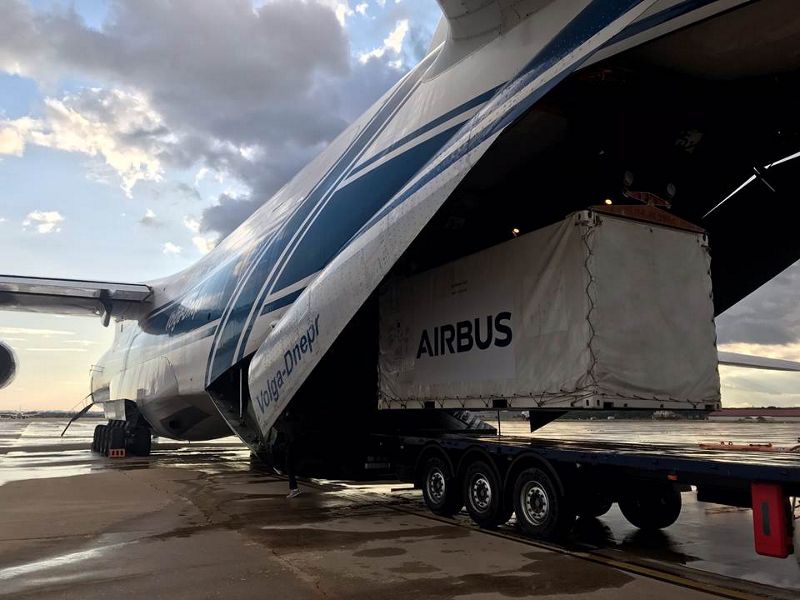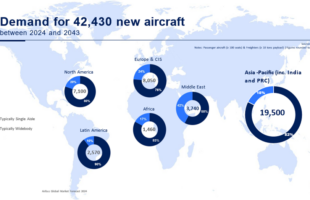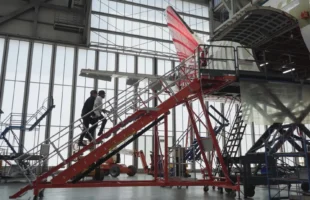
Courtesy of Airbus

Last week, SEOSAT-Ingenio was loaded at the Torrejón de Ardóz Air Base, near Madrid, on board Volga-Dnepr’s Antonov An-124 cargo plane bound for the Kourou launch site.
The Spanish satellite built by Airbus shared the flight to Guyana with the French satellite Taranis from CNES.
The launch, scheduled for 18 November aboard a Vega launcher, will see both SEOSAT-Ingenio and Taranis ride-sharing towards similar orbits, at an altitude around 700 km
Airbus said a VESPA payload dispenser, produced by the aircraft manufacturer in Madrid for Avio, will enable Vega to accomplish this dual launch.
Developed primarily by the Spanish space industry and led by Airbus in Spain as the prime contractor, SEOSAT-Ingenio is the first Spanish satellite with optical technology that will allow Spain to capture high–resolution images.
Imagery will be used for civil and military purposes, covering security, land management, natural resources, border surveillance, agriculture and crisis management for natural disasters.
Along with the PAZ satellite launched in 2018, Spain will now have a dual Earth observation system for both optical and radar imagery. This combined data set will produce higher resolution images and better information about the planet for Spanish satellite operator Hisdesat.
SEOSAT-Ingenio is owned by the Ministry of Science and Technology. The Centre for Industrial Technological Development (CDTI) assumes costs and leads the project by delegation.







